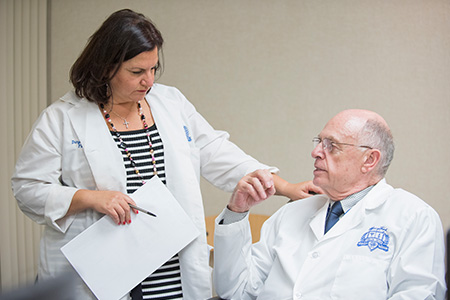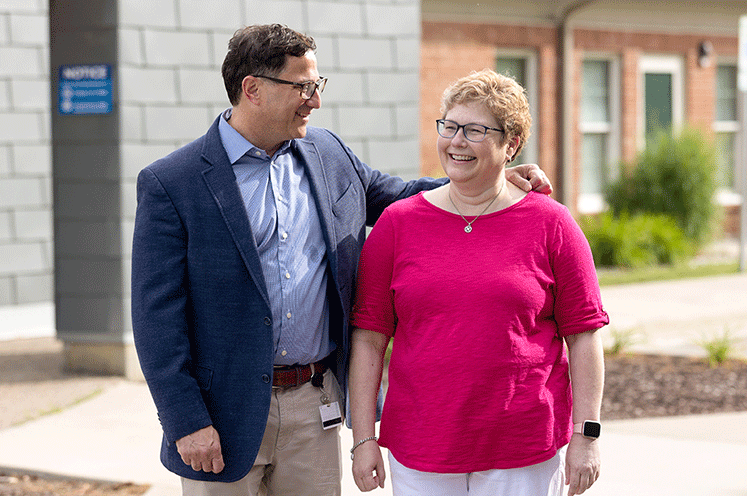Heather's Story
Discover how Heather overcame high-risk breast cancer with RECQL gene mutation through innovative DIEP flap reconstruction surgery.

Our advanced breast reconstruction options help women restore wholeness at the time of or after breast cancer surgery.
If you’ve been diagnosed with breast cancer and your treatment plan includes a mastectomy or lumpectomy, we offer several breast reconstruction procedures to help you achieve your goals. In many cases, we can perform your reconstruction surgery at the same time as your mastectomy or lumpectomy. We will explain all the options and the risks and benefits of each to help you feel like yourself again.
Discover how Heather overcame high-risk breast cancer with RECQL gene mutation through innovative DIEP flap reconstruction surgery.


Rebecca's team worked with her on a personalized breast cancer care plan, which included a lumpectomy with reconstruction, chemotherapy and radiation.
Breast reconstruction has been shown to provide a variety of mental and physical benefits, including:
After a mastectomy or lumpectomy, breast reconstruction surgery has been shown to provide a variety of mental and physical benefits

We use cookies to improve your website experience. By using this site, you agree to our Terms of Use. Read our Internet Privacy Statement to learn what information we collect and how we use it.